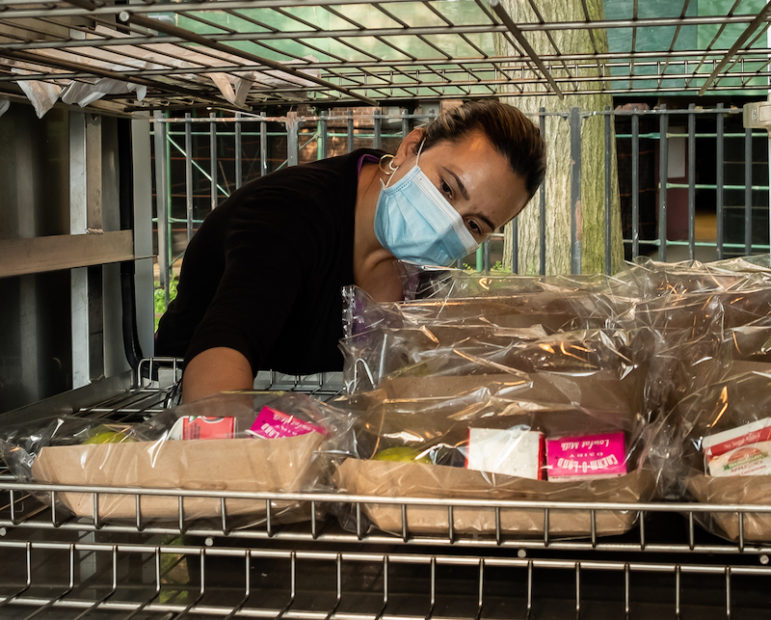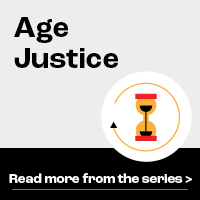The de Blasio administration has no schedule for reopening the centers, and it seems likely the centers will not offer in-person services until 2021.

Adi Talwar
Queens Community House’s Ruby Tamayo loading a meal delivery van. Queens Community House delivers meals daily to over 900 clients, five days a week.Despite the recent closing of more than 100 public schools, New Yorkers have become accustomed to a steady stream of re-openings since June. Hair salons. Restaurants. Children’s day care centers. Even, to some extent, schools.

But the 287 brick-and-mortar senior centers and affiliated sites serving approximately 30,000 New Yorkers remain locked. Expressing concern about social isolation and seniors missing out on some essential services, many members of the City Council and some center operators say the city should begin planning now for a reopening as soon as is safely possible.
So far, however, the administration has no schedule for reopening the centers, and it seems likely the centers will not offer in-person services until 2021.
A challenging reopening
No one expects a reopening, whenever it happens, to be easy. The centers, run by non-profits under contract with the city Department for the Aging (DFTA), will need to provide a safe environment to a growing and vulnerable population at a time of tight budgets. The facilities will have to operate differently than they did a year ago and reassure vulnerable older adults that they are indeed safe.
Meanwhile, despite the shutdown of in-person programming in March, the centers’ clients have been receiving services. Get Food, the city’s emergency food program, has been delivering to tens of thousands of seniors, and center providers have been checking in on them, making about 1.4 million phone calls to some 171,700 older New Yorkers, according to DFTA.
The centers have ramped up virtual offerings, with 170 providing online classes or other activities. One, Selfhelp Community Services, has offered a virtual senior center (VSC), largely for homebound older adults, since 2010. Now it is stressing open chats at lunch hour and other programming “focused on fostering engagement,” says Selfhelp’s Sandy Myers. “There are so many activities with the VSC. You’re not sitting at home doing nothing.”
Despite all this, many older New Yorkers, like their younger counterparts, miss their previous routines.
“A lot of seniors do want to see their centers reopen. They’re calling up their elected representatives and asking, ‘When is it going to open?’” says Councilmember Margaret Chin, chair of the City Council Committee on Aging. “We really can’t drag it out until next year.”
Time to try?
This summer the city opened 145 indoor cooling centers, many in senior centers. The cooling centers, says Allison Nickerson of LiveOn NY, an advocacy group for older adults, are “the reason why we’re having this discussion.”
“Because of the experience with cooling centers, the city saw many people can be in one place and be fine.”
It also indicated that many seniors were eager to congregate. Chin says, “People showed up for the cooling centers even if they had air conditioning at home” because they wanted to see their friends.
Some seniors wonder why centers remain closed while so much else is open, says Tara Klein, policy analyst for United Neighborhood Houses. “Many older adults have started resuming something of a normal life again, but they can’t go to their senior centers,” Klein says. “I’ve heard it expressed that they feel a loss of dignity because of this.”
Some seniors, though, will have doubts. Older people are particularly vulnerable to COVID-19 and at greater risk of becoming seriously ill or dying. Because of this, some may be reluctant to enter a center or to take mass transit to get there.
Margo Eisenberg, 66, of Fresh Meadows, used to go to Selfhelp’s Benjamin Rosenthal Center five days a week, taking advantage of almost everything from parties to fan-dancing to trips around the city. “Anything that was good I was in the middle of,” she said. “It was the bomb.”
Then COVID-19 hit. Eisenberg has stayed busy, biking, working in Starbucks several hours a week and attending online discussions. As much as she values the center and her friends there, Eisenberg is hesitant about returning. She worries about people being “stupid” and not wearing masks. “I think we should just wait for a vaccine. I think that’s probably playing it safe,” she said.
In early September, 25 members of the City Council wrote to the mayor asking the administration to devise a plan for a safe reopening of senior centers. A few weeks later, DFTA Commissioner Lorraine Cortés-Vázquez told the Council’s Committee of Aging, “We have no clue” when “congregate centers” will reopen. The decision, she said repeatedly, would be governed by guidance from the city Department of Health and Mental Hygiene and safety considerations.
Some councilmembers clearly were not satisfied. “We need to take that step, to start planning for a date and what that date will look like and what we need to get there,” said Paul Vallone of Queens.
DFTA has begun meetings with center operators. But, so far, no proposals or guidelines have emerged from those discussions. The city also has rejected allowing centers to provide small group or outdoor programs, at least for now.
Concerns about the gap
With the centers shut, those who work with seniors worry about increased isolation and its effects. Gail Brown, director of senior services at Jacob A. Riis Neighborhood Settlement in Long Island City, says her center has seen increases in depression and substance use by clients. A lack of exercise, she said, means “they’re gaining weight and they’re not happy about it.”
The clients also miss the smell of food, interaction with the staff and, Brown says, “complaining about the pasta being too soft. That was part of their day.”
The number of older New Yorkers waiting for some kind of help from center providers and other city-funded agencies has increased by 265 percent during the pandemic, according to LiveOn. The services, such as housekeeping and personal care, are designed to help them live safely in their own homes. “Folks who had something of a social network pre-COVID-19 had the floor ripped out from them,” Nickerson says. “We have to be sure older people are not forgotten about or left in the lurch.”
The first step toward reopening likely will be providing food. Until last spring, when the city shifted meal services to Get Food, centers served lunch to about 30,000 older New Yorkers every day, offering freshly prepared meals geared to the needs and tastes of their clients. The center hopes to resume providing meals next month, either delivering food or offering “grab-and-go” pickup. While many providers seem to prefer grab-and-go, there is concern people picking up meals will congregate and spread the virus.
As eager as the providers may be, the date for resuming meal service remains unclear. Dina Montes, DFTA’s director of press and public information, wrote in an email that Nov. 1 “is not a target date to start meal service, but a target date for providers to use in their planning.” She says DFTA wants the centers “to have the necessary time needed for them to safely re-open kitchens, and have the necessary staffing and operational capacity.”
As with schools, many senior centers at full capacity would be crowded, and many lack good ventilation systems. Making facilities safer—with better circulation, protective equipment and social distance markings on the floor—costs money. Rising food prices present another budget strain.
New constraints
While the centers have never been awash in funds, things worsened last summer as the city withdrew $15 million that senior centers were slated to receive. Like all city services, those for older New Yorkers could see years of tight city spending.
At the same time, centers will likely face increased demand. Prior to COVID, centers were feeding lunch to some 30,000 people a day, but during the pandemic 70,000 older New Yorkers have gotten city food deliveries, according to DFTA. “We have an additional 30,000 to 40,00 adults who have said, ‘I’m food insecure,’” Commissioner Cortés-Vázquez told the City Council.
This includes people who attended adult daycare programs, which remain closed, as well as people who never sought help previously. “Many more older adults have been rendered vulnerable,” says Christian González-Rivera, director of strategic policy initiative at the Brookdale Center for Healthy Aging. “Thousands of older adults have turned to senior centers because they have no place else to turn.”
When people do return to centers, they will see changes. While pre-COVID centers have been described as “bustling,” the reopened ones almost certainly won’t be. “You can’t have all the seniors coming in the same day,” says Chin. “Instead of 10 people at a table, you have five people at a table.”
González advocated more extensive changes to serve more clients with a range of interests, habits and needs. “If there ever was a time to think about what senior centers do, this is the critical time,” he says.
In August DFTA launched a process to do that, issuing a “concept paper” that Montes says is designed “to stimulate ideas and feedback from Centers, advocates and other stakeholders on what they envision senior centers to look like in the future.” The paper and reaction to it will shape the way centers operate in the next three to six years.
The experiences of the last eight months will weigh heavily on that process, considering, Montes says, how the centers can quickly adapt to emergencies and “the way we provide important services during a crisis.”
For now, the centers continue to adapt to this crisis, confronting the day-to-day reality of senior isolation and curtailed services. On Halloween, the Riis center staff will go reverse trick or treating, leaving bags filled with voter-registration information, candy and other material hanging from client doorknobs. “It’s to let them know we’re still thinking of them,” Brown says.









One thought on “Eight Months into Pandemic, Senior Center Doors Remain Shut”
SCHOOLS REOPEN AS SENIOR CENTERS REMAIN UN-UPGRADED TO COVID-19 SAFETY PROTOCOLS. THIS POPULATION PAYS TAXES+VOTES UNTIL DEATH BECOMES US UNREPLACD BY SCHOOL STUDENTS WHO DONT VOTE NOR PAY TAXES.